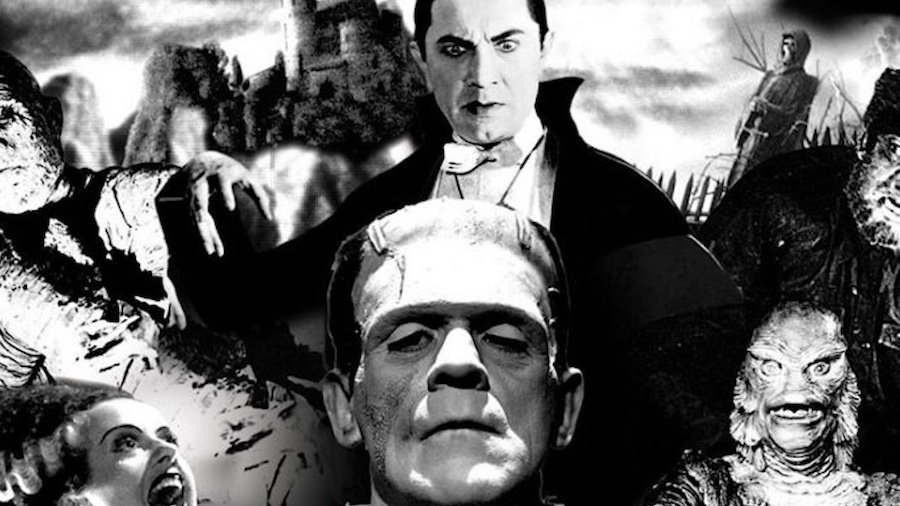There’s a class offered at Anderson University where students face their fears—well, in a manner of speaking.
Students in Dr. Candace Livingston’s CON 310 class, “Monsters: The Life (and Afterlife) of Monstrous Creatures,” are learning how to appreciate, analyze, question and critique monsters that appear in history and contemporary society. The class explores monsters as they’ve appeared in art, books, motion pictures and other forms.
Chewbacca in “Star Wars” is physically strong, but creator George Lucas gave him some likable qualities, too. On the other hand, there are malevolent monsters like the one in the movie “Alien.” Then there are also monsters by transformation, such as when Dr. Jekyll becomes Mr. Hyde. Some monster flicks deal with size, such as King Kong, the giant ape who’s the subject of a pioneering cinematic special effects masterpiece. Other elements of horror deal more with quantity, such as armies of Orcs in J.R.R. Tolkein’s “Lord of the Rings” trilogy. Some have sort of a cute factor, like Gremlins, wreaking havoc in numbers.
Sometimes “monster” is a term ascribed to a candidate’s political opponent or an abusive or violent person—that gets discussed, too.
“Monsters have a lot to teach us,” said Dr. Candace Livingston, who is an Art History professor in the South Carolina School of the Arts at Anderson University. “As students learn early in the course, the very word ‘monster’ reflects this; it comes from the Latin verb ‘monstrare,’ ‘to show.’ To use another word from that same root, monsters always demonstrate something to us.”
Dr. Livingston was inspired to create the class out of a fascination she’s had with monsters since her childhood. In this class, she shows her students how monsters can be a powerful way to analyze society.
“We discuss how monsters have been used metaphorically throughout history to represent people who challenge society’s expectations, and how the very word ‘monster’ is utilized in propaganda even now to create fear and mistrust of people unlike ‘us.’ We analyze how monsters can be used to divide us and feed our social fears or how, conversely, they can teach us empathy for the marginalized and misunderstood,” she said.
“I didn’t just learn about monsters,” said Taylor Harrison, a recent graduate who took Dr. Livingston’s class and is currently an adjunct faculty member in the Art and Design Department. “I think that course taught me the most about myself, which is interesting considering the range of courses I have taken. If you dig in and grapple with the content, it forces you to be reflective in a really challenging but growth-inspiring way.”
Getting back to this article’s first sentence about facing one’s fears—Students in the class study the psychology of fear and why we fear the things we do, both as a society and as individuals. They explore these feelings in a journal kept over the course of the semester. As a final project, students create and present to the class a monster that gives physical form to a personal fear.
When he took Dr. Livingston’s class, Curtis Shirkey learned how during certain time periods there are spikes in certain monsters.
“Vampires were popular at one point, zombies or Kaijus (Japanese monster subgenre) were popular in the 40s and 50s. There are worldwide events that were happening at the time that these monsters embodied the fear that was associated at the time. Now whenever I watch a horror movie, I’m like ‘What is this monster a representation of that we’re facing today?’”
Watching the television show “Finding Bigfoot” captivated Stelan Martin when he was a kid.
“At first it scared me to death. I was not a fan of something lurking outside, especially where I’m from, because of where I am… a lot of woods, surrounded by the lakes as well,” said Martin, who grew up in rural northern Oconee County, South Carolina. “You learn from those shows that Bigfoot liked to stay in the woods and they also know how to swim—as a kid that concerned me a lot.”
Martin, who’s playing the lead role in the upcoming AU Theatre presentation of “Frankenstein,” took Dr. Livingston’s class in the fall 2022 semester. He feels that taking the class helped him to get into his role as the famous fabricated monster.
“I would not have auditioned for the creature if I had not taken her class, because of all these monsters that we discussed,” Martin commented. “You learned the human side of those characters—especially when the auditions came around for ‘Frankenstein.’”
(“Frankenstein” will run Nov. 3-11, 2023 in the Belk Theatre of the South Carolina School of the Arts at Anderson University.)
Another thing about the class—a student can opt out of viewing a horror film if they feel it’s too scary—the class offers them viewing alternatives.
“My hope is that what we do over the course of the semester helps students not only appreciate the monster media all around them in culture on a deeper level but also learn to identify and analyze their own fears, and perhaps to understand and better manage them. It’s a tall order, but monsters can do all these things and more,” Dr. Livingston said.
This course devoted to monsters is a Connections course. Connections courses at Anderson University use the tools of multiple fields to examine a topic of broad interest.

